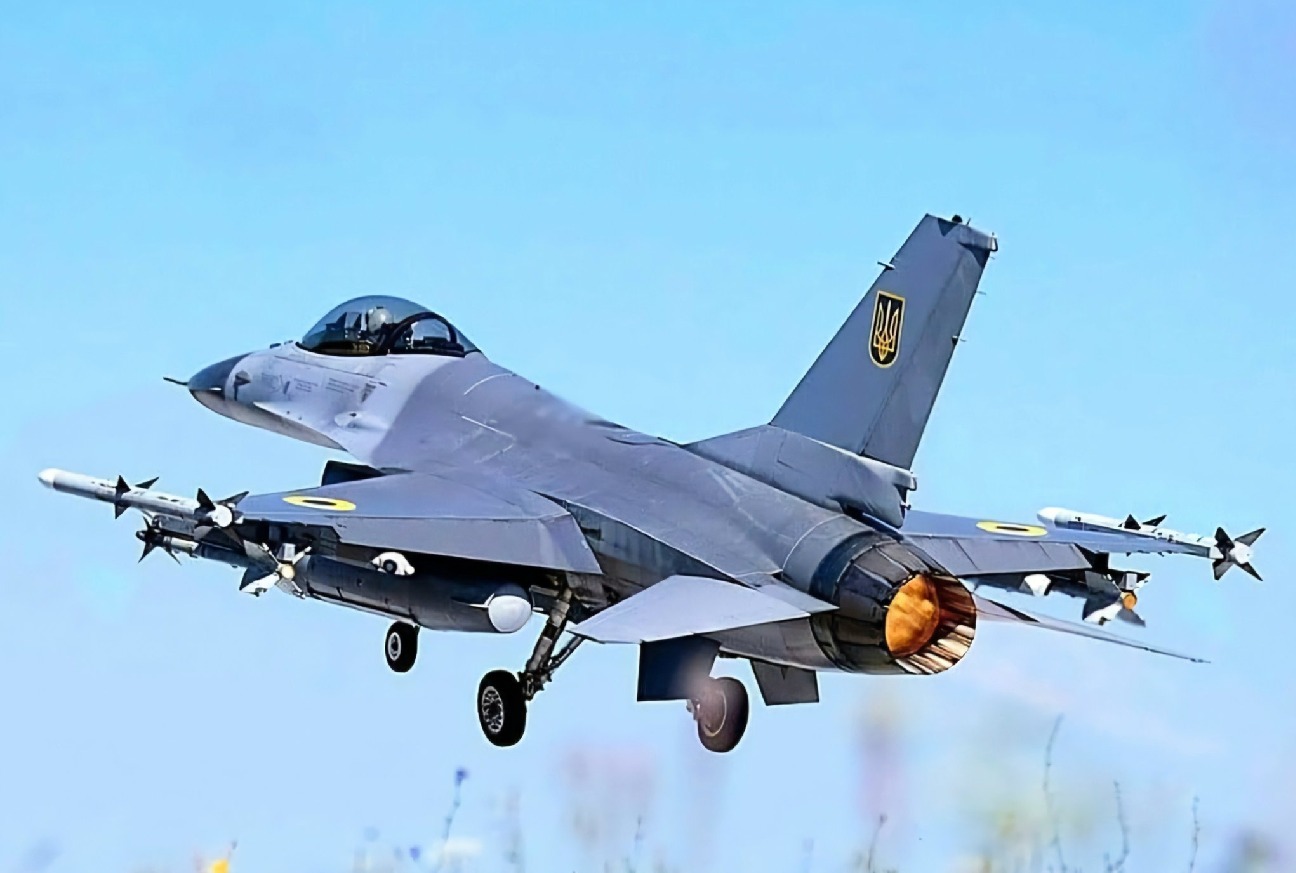In a significant development in the ongoing conflict, Ukraine’s recently acquired F-16 fighter jets have reportedly achieved their first aerial victory.
The announcement was made by President Volodymyr Zelensky during a press conference on August 27, following a massive missile and drone assault launched by Russia the day before.
The deployment of the F-16s marks a crucial enhancement in Ukraine’s air defense capabilities. This operation comes three weeks after the arrival of the first batch of these advanced fighter jets, part of an eventual fleet of around 85 pledged by Belgium, Denmark, the Netherlands, and Norway.
On August 26, Russia carried out an extensive aerial assault targeting 15 of Ukraine’s 24 oblasts. This was one of the largest aerial attacks on Ukraine since the conflict began, involving over 200 missiles and drones.
The assault caused widespread devastation, striking civilians, energy, and fuel facilities, including a dam associated with the Kyiv Hydroelectric Power Plant. Tragically, these strikes resulted in the deaths of seven individuals and injuries to at least 47 others.
Despite the scale of the attack, the damage could have been far worse. Ukrainian forces successfully intercepted and downed 102 of the 127 missiles and 99 of the 109 drones launched by Russia.
The F-16s contributed to these defensive efforts, enhancing an already diverse air-defense network that includes long-range surface-to-air missile batteries, roving patrols of gun-armed trucks, and gun-armed helicopters on anti-drone missions.
In the wake of the recent large-scale attacks, President Zelensky and other top Ukrainian officials have reiterated their calls for the United States to lift restrictions, allowing Ukraine to strike deep into Russian territory to target the military infrastructure fueling the conflict.
In remarks about Ukraine’s apparent first use of F-16s to intercept Russian missiles, Zelensky expressed his gratitude to Ukraine’s international allies for supplying the F-16s but underscored the need for more jets and trained pilots.
“The F-16s gave a very good result. As part of this huge attack, we shot down some missiles and drones with the help of F-16s,” Zelensky stated.
He continued, “We thank our partners for providing us with the F-16s. Of course, this is not enough; we don’t have many of them, and we still need to train pilots.”

Ukrainian F-16s Ideal for Air Defense Duties
Since Ukraine took delivery of its first batch of F-16 fighter jets, it was clear that these aircraft would play a crucial role in the nation’s air defense strategy. Finnish analyst Joni Askola highlighted the significance of seeing these F-16s in action, noting their value despite their age.
Askola pointed out, “The Ukrainian F-16 jets are relatively old, but they are equipped with AMRAAM and Sidewinder air-to-air missiles, albeit not the latest versions.”
Although these missiles are not the latest on the market, they are reliable and readily available from Ukraine’s allies. This ensures that the Ukrainian Air Force can maintain a steady supply of munitions for its F-16s as more of these fighters are delivered over the coming year.
Deploying the F-16s for air-defense patrols is a logical choice given Russia’s ongoing aerial bombardment. The Ukrainian military is utilizing every available resource to counter the daily attacks. The F-16s, upgraded fighters from the 1980s, are well-suited for this task.
The initial deployment of Ukrainian F-16s primarily focused on intercepting Russian cruise missiles. This allows the Ukrainian Air Force to utilize their new assets in a relatively controlled and low-risk environment.
However, as additional F-16s continue to arrive and the Ukrainian Air Force’s operational capabilities expand, the scope of its missions is expected to evolve.
These advanced jets may be tasked with engaging more formidable and sophisticated targets, such as Russian fighter aircraft and complex air-defense systems.
Askola pointed out, “Once Ukraine acquires additional F-16 jets, more pilots, two Saab AEW planes, increased experience, and more missiles, the jets will be utilized for purposes beyond just air defense.”
While Askola does not view the F-16s as game-changers in the conflict, he believes they will increasingly contribute to a wider range of missions.
To prepare the F-16s for more intense engagements, Western and Ukrainian officials are ensuring that these jets are equipped with advanced protection systems.
The Ukrainian F-16s are equipped with Pylon Integrated Dispensing Systems (PIDS) and Electronic Combat Integrated Pylon Systems (ECIPS) to protect them from Russian missiles.
Before the arrival of the first batch of F-16 Viper fighters for the Ukrainian Air Force, the US Air Force assisted in optimizing the electronic warfare (EW) systems on these jets, as per EurAsian Times. This enhancement strengthened their ability to counteract Russian threats and improve their defensive capabilities.
- Contact the author at ashishmichel(at)gmail.com
- Follow EurAsian Times on Google News




